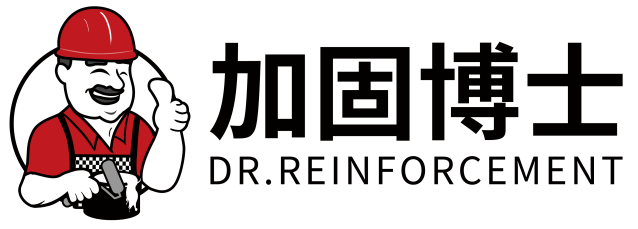Förståelse Koltrådtyg Komposition
Råmaterial: Från polymer till kol
Kol fiber tyg börjar sitt liv med några ganska bra råvaror, huvudsakligen polyakrylnitril eller PAN som förkortas, tillsammans med pitch. Det som är viktigast här är vad som ingår i framställningen av dessa fibrer eftersom det verkligen avgör hur slutprodukten blir. De flesta kolfiber som finns på marknaden idag kommer direkt från PAN-material och utgör cirka 90 % av produktionen. De andra 10 %? Där är det pitch och gammal vanlig rayon som används. När tillverkare väljer sina råvaror spelar kvaliteten en avgörande roll för egenskaper som hur starkt tyget är, hur styvt det blir när det bearbetas och om det tål värmebelastning. Detta grundläggande urval av byggstenar har stora konsekvenser för slutresultatet i olika tillämpningar.
Att omvandla polymerer till kol handlar om att få varje steg helt rätt. Ta kolatisering som exempel. När man tillverkar kolfibrer från PAN (polyakrylnitril) upphettar tillverkarna materialet till extremt höga temperaturer utan närvaro av syre. Denna process bränner i princip bort allt som inte är kol, samtidigt som de önskade fibrerna bevaras. Efter denna intensiva behandling följer en ytterligare bearbetningsrunda där fibrerna behandlas och dimensioneras så att de håller bättre ihop när de vävs in i tyg. Och här kommer något intressant: om utgångsmaterialet inte är av god kvalitet, går allt sönder längre fram i kedjan. Därför kräver seriösa producenter att högkvalitativa råvaror används genomgående i sina operationer. Bättre ingångsmaterial innebär starkare, mer pålitliga produkter. koltrådtyg i slutet av dagen.
Den roll som Koltrådfabrikat kläde Struktur
Hur kolcompositeväven är strukturerad bestämmer verkligen vad den kan mekaniskt och var den används. Vi ser tre huvudtyper där ute: envävande, vävda och o vävda konfigurationer, där varje typ erbjuder något unikt för specifika ändamål. Med envävande kolcomposite består alla de extremt starka fibrerna av en riktning endast. Detta ger enastående styrka längs den axeln, men om någon behöver styrka i flera riktningar måste de kombinera flera olika orienteringar. Vävda versioner tar saker ett steg vidare genom att korsa fibrerna i mönster såsom ren väv, twillväv eller till och med satsinväv. Dessa skapar material som tål mycket i två riktningar samtidigt och också ser ganska coola ut på yttre delar av flygplan eller sportbilar.
Hur ett tyg är konstruerat påverkar verkligen hur starkt och flexibelt det kommer att vara, enligt vad forskare har upptäckt över tiden. Ta till exempel vävnadstyg, dessa har fibrer som går i olika riktningar vilket ger dem en god balans mellan styrka och flexibilitet. Det gör dem utmärkta för komplicerade former som behövs i saker som flygplansdelar eller bilkomponenter. I andra änden av saker, när vi behöver maximal styrka i en viss riktning, till exempel med vissa flygdelar, fungerar enfilsstrukturer bäst. Att välja rätt typ av kol fiber tyg handlar inte bara om att välja något som ser bra ut på papperet. Olika branscher kräver olika prestandaegenskaper, så att få rätt val är mycket viktigt för allt från tillverkningskostnader till slutgiltig produktkvalitet i många sektorer.
Tillverkningsprocess för koltrådstoff
Förvaringsmaterial och oxidation
Tillverkning av kol fiber tyg börjar med att förbereda rätt utgångsmaterial, något som är verkligen viktigt för att behålla dessa fibrer stabila när de genomgår oxidation senare. Mest av tiden arbetar tillverkare med antingen PAN (det står för polyakrylnitril) eller pitch som sitt basmaterial. Dessa material kräver ganska mycket förberedande arbete innan de omvandlas till faktiska kol fibrer. Hela processen innefattar att sätta dem genom vad vi kallar oxidation, där vissa kemikalier hjälper till att säkerställa att allt förblir på plats under de kommande stegen i tillverkningen av kol. Det som sker här är ganska enkelt egentligen - alla atomer som inte är kol skjuts helt enkelt ut, och lämnar kvar denna starka kolstruktur. Vanligtvis använder man metoder såsom att utsätta materialet för ozon gas eller helt enkelt låta det sitta i vanlig luft medan man exakt kontrollerar hur länge varje steg sker så att slutgiltiga produkten fungerar väl utan att kollapsa för lätt.
Kolifiering och grafitisering
Efter stabiliseringen genomgår fibrerna karbonisering, vilket i grunden innebär att de upphettas till mycket höga temperaturer för att omvandlas till verklig kol. Detta sker mellan cirka 1000 grader Celsius upp till så mycket som 3000 grader Celsius. Vid dessa extrema temperaturer bränns det mesta som inte är kol bort, vilket lämnar kvar främst rena kol fibrer. Vissa fibrer kan därefter genomgå ytterligare ett steg som kallas grafitering, där de upphettas ännu mer än 3000 grader. Denna extra upphettning orsakar vissa strukturella förändringar i materialet som faktiskt gör det starkare och tuffare. Hur väl hela denna process fungerar beror till stor del på att hålla allt under kontroll under varje steg. Om tillverkarna gör fel på någon del av dessa temperaturkänsliga steg kan det verkligen påverka hur bra det färdiga kol fiber tyget blir.
Vevemetoder för koltråduk
Kol fiberduk vävs i flera olika former, varje typ är utformad för särskilda ändamål och materialkvaliteter. De huvudsakliga typerna är linnen, twill och satäng väv, alla med sina egna unika fördelar när det gäller böjbarhet, hållfasthet och övergripande styrka. Linnen väv ger ganska jämn mekanisk egenskaper över hela banan. Twill väv gör tygerna mer flexibla dock, vilket är anledningen till att tillverkare ofta väljer denna för komplexa former och detaljerade mönster. Satäng väv sticker ut eftersom den skapar verkligen släta ytor och tillåter materialet att böja lätt, så det fungerar bra där utseende är viktigast. Branschforskning visar att att välja rätt väv kan göra en stor skillnad i både produktionskostnader och hur väl den slutliga produkten presterar, vilket förklarar varför företag lägger så mycket tid på att räkna ut vilken typ av väv som passar deras behov bäst.
Enriktig vs. Vovad kol fibraplattor
Den främsta skillnaden mellan envävda och vävda kolfiberplattor ligger i hur de är konstruerade och vad de kan tåla. Med envävda plattor går alla kolfibrerna rakt i en riktning, vilket ger dem otrolig styrka och styvhet längs den riktningen. Det gör dem perfekta för saker som flygplansdelar som behöver tåla intensiva krafter från en enda vinkel. Å andra sidan tar vävd kolfiber samma fibrer men väver ihop dem i vinklar, vanligtvis 0/90 grader eller ibland till och med korsmönster i 45 grader. Det som skapas är ett material som håller väl mot spänningar som kommer från olika riktningar. Bilindustrin älskar detta material för att tillverka bilkarosserier som behöver styrka både framåt-tillbaka och sida till sida. Båtbyggare förlitar sig också mycket på vävd kolfiber eftersom deras farkoster utsätts för vågor som träffar från alla möjliga vinklar ute på vattnet.
Dessa olika typer har också ganska distinkta mekaniska egenskaper. När vi tittar på endirektionala plattor visar de ofta mycket stark motståndskraft mot drag- och böjning längs med fiberriktningen. Det gör dem utmärkta för situationer där maximal hållbarhet behövs i en specifik riktning. Men här kommer baksidan – de blir mycket svagare om krafterna kommer från sidled eller diagonala vinklar. Vävda plattor berättar däremot en annan historia. De har inte lika mycket kraft i någon enskild riktning, men vad de saknar i rak linjekraft gör de upp för med en balanserad prestanda i flera riktningar. Denna typ av mångsidighet hjälper dem att klara varierade belastningar bättre. De flesta erfarna ingenjörer kommer att välja endirektionella material när de arbetar med konstruktioner som kräver exceptionell styrka i specifika riktningar, medan vävda alternativ vanligtvis är att föredra när tillämpningen innebär oförutsägbara laster som kommer från flera riktningar samtidigt.
Hybridtyger med kolfiberlim
Hybrida material tillverkade med kolfiberlim har blivit allt viktigare inom avancerad tillverkning. Dessa material kombinerar kolfibrer med andra ämnen för att förbättra den övergripande prestandan. De senaste limteknologierna gör det möjligt att skapa bättre förbindelser mellan kolfibrer och olika basmaterial, vilket innebär att slutgiltiga produkter kan hantera större belastningar och fördela vikt mer jämnt. Vad som gör kolfiberlim så värdefulla är deras påverkan på produktionskostnader och effektivitet. De gör det mycket enklare att integrera kolfibrer i komplexa tygstrukturer under tillverkningsprocessen. Denna förenklade metod gör att ingenjörer kan skapa kompositmaterial som behåller enastående styrka samtidigt som de förblir förträffligt lätta. Sådana egenskaper gör dem idealiska för luftfartsdelar där viktreduktion direkt översätts till bränsleeffektivitetsvinster.
Tillverkare inom luftfart och bilindustrin har börjat omfamna hybridvävnader eftersom de ger bättre resultat än traditionella material. För plan och rymdfarkoster sticker dessa kompositmaterial ut på grund av sin otroliga styrka samtidigt som de är lätta nog för att inte lägga till onödig vikt. De klarar också hårda miljöer utan att brytas ner med tiden. Bilproducenter finner dem lika värdefulla eftersom de kan böjas utan att spricka och absorbera stötar mycket bättre än vanliga alternativ. Detta är mycket viktigt när man designar säkrare fordon som fortfarande måste uppfylla strikta bränsleekonomistandarder. När allt fler företag experimenterar med hybridvävnadsteknik inom olika sektorer ser vi verkliga förbättringar i allt från flygplanskomponenter till karosserier för racerbilar. Dessa materialens mångsidighet innebär att ingenjörer nu kan lösa problem som verkade omöjliga för bara några år sedan.
Nyckelegenskaper hos koltrådklädning
Överlägsen styrka-vikt-förhållande
När det gäller styrka jämfört med vikt sticker kolfiber tyg ut från mängden jämfört med äldre material som stål och aluminium. Vad som gör kolfiber så speciell? Den är ungefär fem gånger starkare än stål men väger betydligt mindre, något som tillverkare uppskattar när de behöver material som är både hållbart och lätt i vikt. Laboratorier har testat detta material upprepade gånger och kommit fram till att kolfiber tål tryck utan att öka i vikt. För industrier där vartenda uns spelar roll har detta material blivit en stor förändrare. Ta flygplan som exempel. Flygbolag som byter till delar i kolfiber minskar ofta den totala vikten, vilket innebär mindre bränsleförbrukning och längre flygsträckor mellan tankningarna. På marken ser bilverkstäderna liknande fördelar. Bilar som byggts med komponenter i kolfiber förlorar ofta cirka hälften av sin ursprungliga vikt, vilket resulterar i bättre bränsleekonomi med förbättringar på cirka 35 procent samtidigt som passagerarnas säkerhet bevaras. Energy.gov stödjer dessa siffror, även om resultaten kan variera beroende på hur materialet används.
Termisk och Elektrisk Ledningsförmåga
Det som verkligen sticker ut med kolfiber är hur väl det leder värme jämfört med vanliga isoleringsmaterial. De flesta isolatorer fungerar genom att blockera värmeöverföring, men kolfiber transporterar faktiskt runt värme effektivt. Detta gör det utmärkt för att hantera temperaturer i situationer där saker blir extremt varma. Materialet bryts inte ner ens när det utsätts för intensiv värme under långa perioder, vilket förklarar varför tillverkare förlitar sig så mycket på det inom flyg- och rymdindustrin där temperaturkontroll är viktig. En annan intressant egenskap är dess elektriska ledningsförmåga. Detta är inte bara teoretiska saker heller. Elektronikföretag använder redan kolfiber för att bygga delar som behöver bära elektrisk ström utan att förlora effektivitet. Vissa verkliga tester visar att införlivandet av kolfiber i kretskort och kontakter förbättrar signalintegriteten samtidigt som det minskar energiförlusten över hela kortet.
Kemisk motståndskraft och hållbarhet
Kolfiberduk skiljer sig ut eftersom den tål alla slags industriella kemikalier och lösningsmedel, vilket verkligen förbättrar dess livslängd. När material motstår dessa kemikalier tenderar de att hålla längre och spara pengar på sikt, särskilt i hårda miljöer där utrustningen utsätts för ämnen som bryter ner andra material. Byggarbetsplatser och fabriker finner denna egenskap väldigt användbar eftersom deras utrustning ständigt utsätts för tuffa förhållanden dag efter dag. Forskning visar att kolfiber behåller sin form och hållfasthet även i allvarligt korrosiva situationer. Kombineras denna kemikaliemotståndskraft med dess styrka och värmetålighet, förstår man varför så många olika industrier vänder sig till kolfiberduk för projekt som kräver material som håller i många år.


